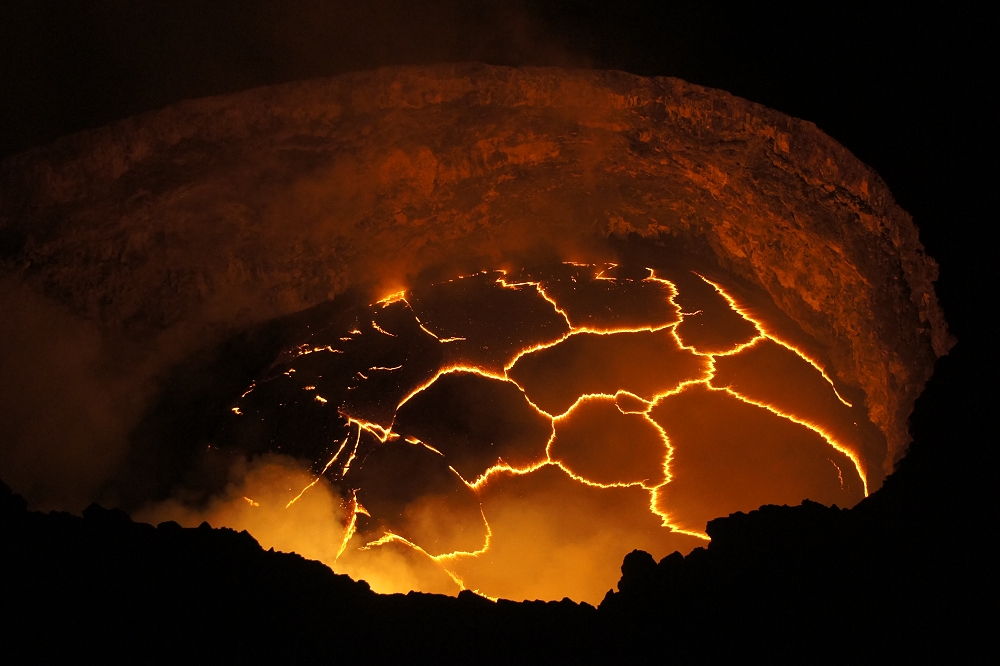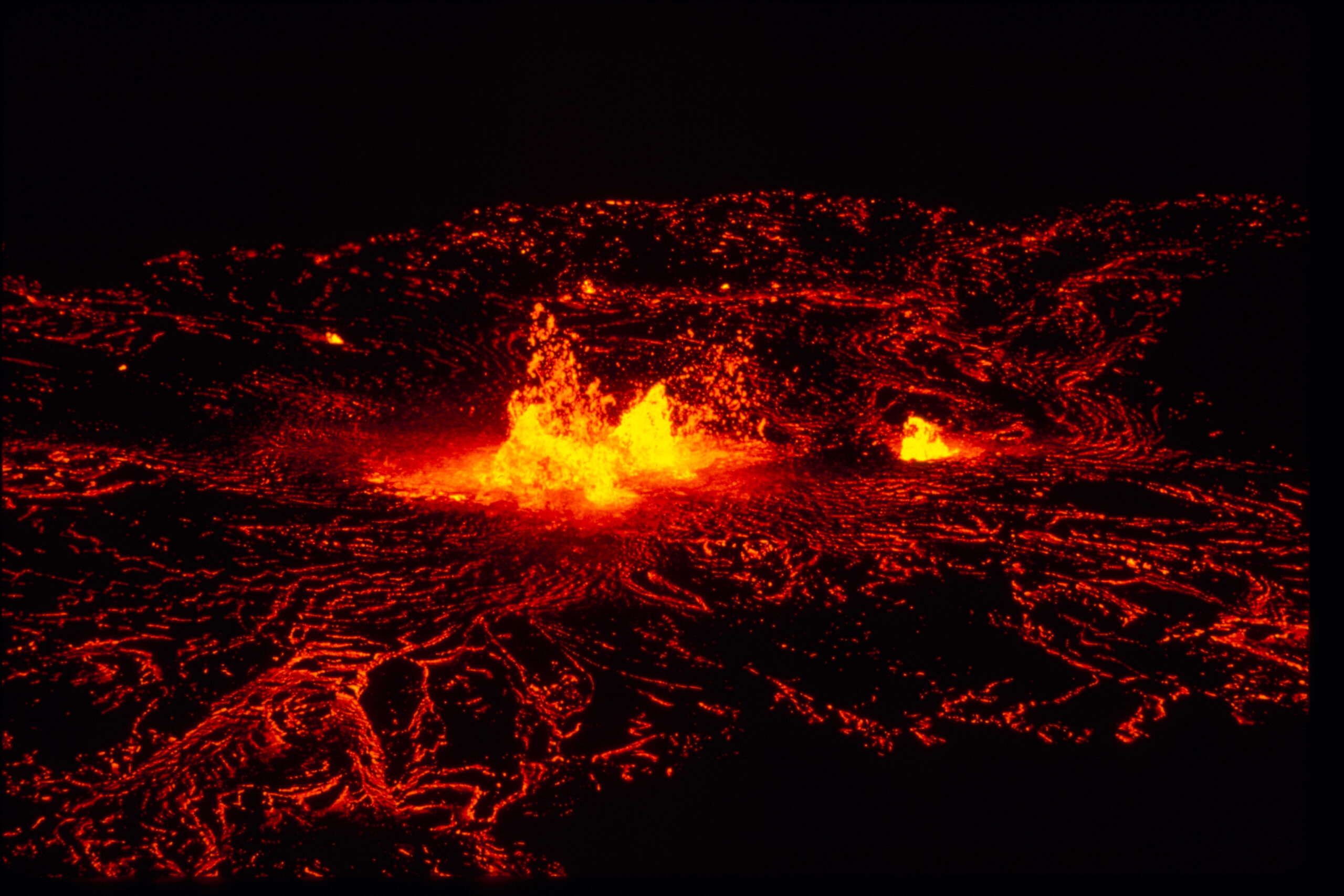We decided to start with a bottom-up world building exercise. In bottom-up design, the creator starts with a single piece of the world: a place, a creature, a culture. From that point, they build out the wider world as needed for the story. They want to keep the details of the wider world just fuzzy enough that they can fill them in during future stories without fear of contradicting themselves.
In bottom-up design, it’s a good idea to stop now and then and ask, “Do I see a story? Better yet, do I see at least two stories?” If the answer is yes, it’s time to pause the world-building and focus on the story. From there, build out just what is needed to finish the story.
So that’s what we’re going to do:
- Pick a single piece of the setting
- Build out a bit of the wider world from that piece
- Ask ourselves, “Do we see a story?” If we do and we like it, stop world-building.
So, a single piece of a world. Naively, I thought we would start with something obvious: a space-station, say. Foolish, foolish.
I asked Tom, “Where should we start?”
“How about a creature that swims in magma?”
In my head, I’m thinking, “You must be kidding me. The only exobiologist on my speed dial has an awful case of the flu and you want me to create a vaguely realistic magma monster?”

Pahoehoe’s toe, Hawai’i Volcano Observatory, public domain
Out loud, I said, “Okay. Sure. Why not?”
If it were an easy job…
Let’s dig into it. The use of the word “swims,” in stark contrast to the phrase, “frizzles like a fritter” suggests that this creature can survive the temperatures and pressures of magma, which are high. Specifically how high?
This is the danger point because all you really want is a little information and it is so easy to get lost in a maze of petrology, learning fascinating facts about magma for half an hour or so.
First lesson of world-building: keep the goal in mind.
So, we gather a quick smattering of “facts” about magma. I put the word “facts” in quotations because I am not cross-checking my citations for accuracy at this time. If we really like this world and start writing stories in it, then we should certainly go back and check these statements.
According to a USGS article, magmas exist at 1100 C to 1500 C. Magmas have various compositions and often occur in “partial melts,” where the temperature is just high enough to liquify the lower-melting point compounds (such as rhyolite, apparently), leaving solid particulates of higher-melting point compounds. If my vague memories of geophysics classes are correct, magma often occurs when solid material that is close to the melting point rises through the planet into a region of lower pressure. At lower pressures, the melting point is lower, so the material liquifies with no added heat. Ta-da: magma.

Magma partial melt illustration, Jillcurie, CC BY-SA 3.0
A quick glance at some abstracts suggests that there is some evidence for gold-enriched magmas which, at least in Kilauea’s younger days, condensed out as gold-enriched basanite glass. There also appear to be some questions about how tungsten behaves in magma melts. Well, tungsten has an extremely high melting point and doesn’t incorporate easily into ordinary rock lattices so it makes sense that there’s some questions there.
Hmm. Tungsten has an extremely high melting point…
Aha! We postulate creatures with tungsten-rich “cellular” structures embedded in a viscous silicate network. Thanks to the tungsten framework, these “cells” are relatively stable in even fairly hot magma, allowing the creature to continue existing in the relatively high temperature, high pressure regions of magma flows. The creatures swim in magma down to…down to some depth/temperature/pressure to be determined.
Why did they evolve to swim around in magma? Heat energy can be used to do useful work and there’s plenty of heat in a magma shaft. We imagine these creatures take the heat energy of their surroundings and use it to…to perform some complex chemical reactions necessary for their survival. I suspect this veers into exotic organic chemistry so we’ll put a pin in that and label it, “Geochemist?”
These creatures live in the magma stream, gathering in whatever nutrients it is they gather. In gathering their nutrients, they also have excellent opportunities to gather rare minerals like gold. They could filter gold out of the magma and store it in their bodies.
I feel a story just up ahead.
Say there is a culture that likes gold or other rare and valuable minerals. What if they fish for the magma creatures? Oh, better yet. What if they shepherd the magma creatures? They provide magma creature spawning beds—spawning? What are these, magma trout?
Second lesson of world-building: ideas often outrun vocabulary.
These shepherds provide safe spaces for the magma creatures to bear and raise their young (take that, vocabulary). For instance, they could use a chamber at the bottom of a volcano. The magma is cooler there. Perhaps magma creatures need cooler temperatures to condense certain crystalline lattices as part of the reproductive process. I have to remind myself not to go too far with this or I will have to call a geochemist.
Thinking about these chambers, imagery starts to flow. A cave glows in the radiant heat of the magma flow. The red glow shines off glass domes or crystalline lattices constructed by the magma creatures as nests.

Ivan Vtorov CC BY-SA 3.0
We now have young magma creatures growing up in the bottom of a volcano, which is convenient if we want these “shepherds” to be sentient creatures that operate in an environment more like Earth’s surface. There must be a settlement on the volcano or near the volcano for the shepherds, perhaps even a town or city. We’ll have to worry about how the shepherds feed themselves and so forth but for this second, back to the magma creatures.
At a certain point in their life-cycle, the young magma creatures move into the magma streams. Perhaps they travel along certain predictable paths or choose their own adventures. Do they travel in groups? Maybe the shepherds follow along. They will need some fairly impressive technology to follow along in person. Even robots would need to be made of exceptionally durable materials. The chips we use in our technology are silica-based. Right. Silica is a major ingredient of the liquid in the magma. Therefore, our sentient shepherds must have some amazing computer cooling technology or a different way of designing any robots, computers, and communications equipment involved in following the magma creatures.
Do the shepherds themselves travel the magma streams, perhaps in submersible vehicles, or do they have trackers/robots/etc? Your answer changes the flavor of your world. For me, putting the shepherds themselves into the cycle has two effects. First, it fosters a level of connectedness and care between the shepherds and their magma creatures, which I like. Second, it gives me as a writer more opportunities to get the shepherds into trouble, which lets me get the people that support the shepherds into trouble and on out. Trouble and conflict are exactly what an RPG adventure writer needs, so personally, I am shoving the shepherds straight into the magma stream.
At this point, let’s loop back to that initial story idea: the magma creatures accumulating rare minerals in their bodies over time. If, as we’ve suggested, the shepherds are part of a society that wants those rare minerals, they will have to extract them at some point in some way. The choice of “how” will have a significant impact on the world’s flavor.
In one scenario, the shepherds select the old magma creatures. They haul the old creatures from their magma bed and kill them, sending their rocky bodies to the refinery to be processed. In a different scenario, the magma creatures die of old age and the shepherds simply gather their bodies to be refined.
In a third scenario, magma creatures in the wild die of metal poisoning, stuffed to the stiffening point with rare minerals that clutter their chemical networks. A unique medical procedure safely extracts the rare minerals, sending the magma creatures back to their home with a new lease on life. Each of these scenarios gives a different color to the world. Each one leads to a different set of stories.
How do you choose? Good question! I go back to story. I take up one scenario. In just a few minutes, can I come up with the core of a story that arises from that situation? Can I find two? Move to the next and try again. The situation that leads to the most stories is a solid candidate. However, my feelings matter, too. I’ll write more adventures and more vivid adventures in a world that I enjoy writing in. So, I look for the scenario that leads to at least some stories and that gives me a world-flavor that I would like to write in.
Let’s go back a step for a second and do a little more world-building. Why use the term “shepherds”? The term “shepherd” implies watchful care. What watchful care do magma creatures need?
Suddenly, a lava leviathan rises from the melted rock itself!
Oh, that’s why.
Lava leviathans are clearly huge magma creatures that feed on other magma creatures, the sharks of the magma world.

Hawai’i Volcanoes National Park, US National Park Service, public domain
In another instant, smaller creatures start popping up around the original magma creatures in the imagination. Beautiful crystal formations bloom on the sides of cooling magma caves, ripe for young magma creatures to munch. Ribbons of dark, cooling basalt floating on liquid streams like seaweed on water appear in the imagination, with insects and tiny creatures of surprising compositions eating them, walking on them, even sleeping under them.
Impressive.
On the surface, we have a culture of sentient creatures who have a strong economic drive for gold and/or other rare minerals. They have submersibles and refineries and probably have a healthy agriculture to support all that machinery. Their technology may resemble ours broadly but they must use some clever designs in at least some of their computer systems because in the magma streams, the silica chips in ours would frizzle. Of course, I could be wrong about that detail but if we like the idea of a different way of making technology, we run with it anyway and just edit out the explanation.
We certainly have stories. We can tell stories from the perspective of the magma creatures, the shepherds, the shepherds’ community, the workers in the industries that rely on those minerals… What about the shepherds’ strike to win better treatment for the creatures under their care? The reduction in gold refining jeopardized the whole MacGuffin system! Then there’s the tale of the scientists who risked their lives to follow the lava leviathan into the lower mantle, and of course the classic monster-hunt story, if your group’s fancy takes you that way.
There is so much more to say about this world but the rule when we started was, when we found the stories, we would stop world-building.
Let’s go tell some stories.
Can the hero have their own lava-dog?
Suppose the magma creatures are interested in, what to them, are rare elements like carbon and hydrogen and that the shepards only _think_ they are the ones doing the sheparding…